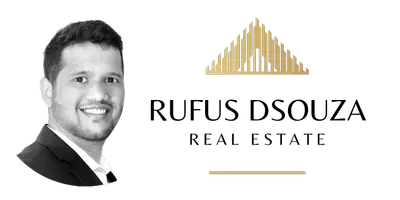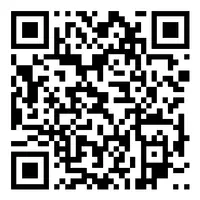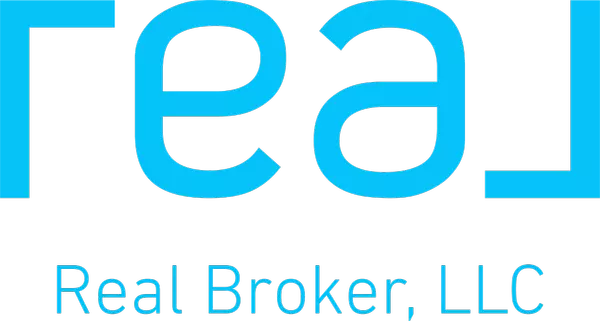Ontario first-time home buyer guide 2023
by Rufus Dsouza
If you’re buying a home for the first time, you’re in luck! Ontario has a number of excellent first time home buyer incentive programs. Here’s what you need to know about each of the incentives available to you.
1. Home Buyer Plan for First Time Home Buyers (HBP)
The Home Buyers’ Plan (HBP) is a program that allows you to withdraw funds from your registered retirement savings plans (RRSPs) to buy or build a qualifying home for yourself or for a related person with a disability. This allows you to save for your down payment in a tax deductible account.How does the Home Buyers Plan Work?
The Home Buyers’ Plan allows you to BORROW money from your RRSP tax-free.
Normally, when you withdraw from an RRSP the funds would be taxed as personal income, but you don’t have to pay it back. When withdrawing from an RRSP under the Home Buyer’s Plan, you must pay the entire amount back into your RRSP.
You will have 15 years to repay the money to your RRSP, starting up to two years after the initial withdrawal. Every year, the government will send you a statement summarizing what you repaid and what’s outstanding.
How much can I withdraw from my RRSP?
You may withdraw up to $35,000 from your RRSP. Your spouse or partner may also withdraw up to $35,000, — $70,000 in total
Requirements for the First-Time Buyer RRSP Plan
In order to withdraw from your RRSP to assist with the purchase of your first home there are a few requirements you must meet:
- The home you’re purchasing must become your principal residence. Meaning you’re living there upon closing, not renting the entire property out
- Your RRSP contributions must remain in the RRSP for at least 90 days before you can withdraw them under the HBP, or they may not be deductible for any year
- You must be a resident of Canada at the time of withdrawal
- You cannot withdraw more than $35,000 (if purchasing with a spouse, they can also withdraw $35,000 from their own RRSP)
- The funds must be withdrawn no later than 30 days after the closing date
- The home must become your principal residence before October 1 of the year following the RRSP withdrawal. Be careful, if you’re buying a pre-construction home, because delays might prevent you from meeting the deadline.
- You must be a first time home buyer:
- You have never purchased a home before
- In the last 4 years, have not occupied a home that either yourself or your current spouse or common-law partner owned, or
- You have recently experienced the breakdown of a marriage, or common-law partnership
2. Tax-Free First Home Savings Account
In Canada’s 2022 budget, the government proposed the introduction of the Tax-Free First Home Savings Account (FHSA). This new registered plan would give prospective first-time home buyers the ability to save $40,000 on a tax-free basis. Assuming the bill will be passed, the FHSA rules will enter into force on April 1, 2023
How does the Tax-Free First Home Savings Account Work?
The government expects that Canadians will be able to open and contribute to an FHSA at some point in 2023. No matter when this happens in 2023, Canadians would be allowed to contribute the full $8,000 annual limit in that year.
The key design features of the FHSA offers prospective first time home buyers the ability to save $40,000 tax free. Just like an RRSP, contributions to an FHSA will be tax deductible, and like a TFSA, income and gains inside an FHSA as well as withdrawals would be tax free.
Who is Eligible to open an FHSA?
To open a Tax-Free First Home Savings Account, you must,
- Be a resident of Canada
- Be at least 18 years of age
- Be considered a first-time home buyer:
- You have never purchased a home before
In the last 4 years - You have not occupied a home that either yourself or your current spouse or common-law partner owned, or
- You have recently experienced the breakdown of a marriage, or common-law partnership
- You have never purchased a home before
How much can I contribute to a First Home Savings Account?
You may contribute up to $40,000 over your lifetime, and up to $8,000 in one year.
The annual contribution limit applies to contributions made within the calendar year. Unlike RRSPs, contributions made within the first 60 days of a given calendar year cannot be attributed to the previous tax year.
You may carry forward up to $8,000 of your unused annual contribution amount to use in a later year (subject to the lifetime contribution limit of 40,000). However, carry-forward amounts do not start accumulating until after you open an FHSA.
Qualifying Withdrawals From a First Home Savings Account
In order for an FHSA withdrawal to be a qualifying (i.e., non-taxable) withdrawal, certain conditions must be met.
First, a taxpayer must be a first-time home buyer at the time a withdrawal is made. Specifically, you must not have owned a home in which you lived at any time during the part of the calendar year before the withdrawal is made or at any time in the preceding four calendar years. There is an exception to allow individuals to make qualifying withdrawals within 30 days of moving into their home.
You must also have a written agreement to buy or build a qualifying home before October 1 of the year following the year of withdrawal and intend to occupy the qualifying home as your principal place of residence within one year after buying or building it.
A qualifying home would be a housing unit located in Canada. A share in a co-operative housing corporation that entitles you to possess, and have an equity interest in a housing unit located in Canada, would also qualify. However, a share that only provides a right to tenancy in the housing unit would not qualify.
Provided you meet the qualifying withdrawal conditions, the entire amount of available FHSA funds may be withdrawn on a tax-free basis in a single withdrawal or a series of withdrawals.
Interaction with the Home Buyers’ Plan (HBP)
The HBP would continue to be available as under existing rules. Meaning you can make both an FSHA withdrawal and an HBP withdrawal in respect of the same qualifying home purchase.
Choosing to take advantage of the FSHA, HBP, or both, depends on a few different factors, such as timing and the potential amount that will be saved. Withdrawals under both plans can be made tax-free, but since you will have to repay the HBP withdrawal, it may make more sense to contribute to an FHSA first. After maxing out your FHSA contributions, leftover savings may be contributed to an RRSP to save more money tax-free for a down payment on your first home.
3. Land Transfer Tax Rebate for First Time Home Buyers
When you buy a home in Ontario, you will pay Land Transfer Tax when you close on the purchase. If you’re buying in the City of Toronto, there’s also a municipal land transfer tax.
The Ontario government and City of Toronto both offer an incentive to First-time home buyers to rebate a portion of the tax to slightly ease the burden of closing costs for new homeowners.
While this First-Time home buyer incentive is called a “rebate”, in reality on the day of closing, your lawyer will simply make an adjustment to the land transfer tax payable in the amount of the rebate.
What is the Maximum Land Transfer Tax Refund?
The Ontario government offers a refund up to a maximum of $4,000.
If you are purchasing a home in the City of Toronto, there will be an additional rebate for first-time home buyers of $4,475.
Thus, the maximum refund would be $8,475.
How do I qualify for the Land Transfer Tax Rebate?
To qualify for a land transfer tax refund,
- You must be at least 18 years of age
- You must occupy the home as your principal residence within 9 months of the purchase
- You cannot have ever owned an eligible home, or an interest in an eligible home anywhere in the world, at any time
- If you have a spouse, the spouse cannot have owned an eligible home WHILE they were your spouse
Land Transfer Tax Refund When Buying with a Spouse, Partner, or Family Member
When a parent who is not a first-time home buyer and a child who is a first-time home buyer purchase a home together with 50/50 equal interests, the child may claim 50% of the land transfer tax refund.
In a situation where this non-first-time buyer parent is placed on title of the property, usually due to a requirement from the lender, it may be necessary to pay the entire land transfer tax at the time of purchase, and then apply for a refund from the Ministry of Finance.
A first-time home buyer may also claim the land transfer tax refund in proportion to their interest in the home when purchasing with a spouse who had previously owned a home before becoming the purchasers spouse.
4. First Time Home Buyer Tax Credit (HBTC)
To assist first-time home buyers with the rising closing costs for purchasing a property in Toronto (or Ontario), the government created the First-Time Home Buyers Tax Credit.
For the 2022 and subsequent taxation years, the HBTC provides a $10,000 non-refundable income tax credit, which results in a tax credit of up to $1,500 to eligible home buyers.
Who Qualifies for the First-Time Home Buyer Tax Credit?
To qualify for the program, you must be considered a first-time home buyer, which means:
- You have never purchased a home before
- The home must be used as your principal residence
- If you purchased with a spouse, partner, friend, or family member they must also be a first-time home buyer
You may find additional details about the Ontario First Time Home Buyer Tax Credit here.
5. CMHC First-Time Buyer Incentive Program (FTHBI)
The First-Time Home Buyer Incentive was launched in September 2019 with one goal in mind, to help people across Canada purchase their first home. The FTHBI makes it easier for first time buyers to qualify for a mortgage and afford the monthly carrying costs of a home by lowering your monthly mortgage payments.
How does the First Time Home Buyers Incentive Work?
The First-Time Home Buyer Incentive program is a shared equity mortgage loan which allows eligible first-time home buyers to apply to finance a portion of their home purchase with the Government of Canada.
The incentive enables first-time home buyers to reduce their monthly mortgage payment without increasing the amount they must save for their down payment.
The percentage of support varies depending on the type of home you plan on purchasing:
- 5% For a resale home (a property that’s already built)
- 5% or 10% for a newly constructed or pre-construction home
- 5% for a new or resale mobile or manufactured home
The larger incentive amount for pre-construction and new homes is to help encourage the home construction needed to address some of the housing supply shortages in Toronto & the Greater Toronto Area.
The Incentive will be a second mortgage on the title of the property, with no regular principal payments, no interest, and best of all, the homeowner may repay the incentive at any time without a prepayment penalty.
The shared equity mortgage structure of this program means that the government shares in both the potential upside or downside of the property’s value upon sale in the future. And Yes, that means while you own your home, the government of Canada will also own a % of the property.
Who Qualifies for the First-Time Home Buyer Incentive?
The purpose of the First-Time Home Buyer Incentive is to assist home buyers who need a slight boost to make their home ownership dreams a reality.
To qualify for the program, you must be considered a first-time home buyer, which means:
- You have never purchased a home before
- In the last 4 years, have not occupied a home that either yourself or your current spouse or common-law partner owned, or
- You have recently experienced the breakdown of a marriage, or common-law partnership
In addition to qualifying as a First-Time Home Buyer, you must also meet the following requirements:
- Your household income is less than $120,000 (or less than $150,000 if the home you are purchasing is within the Toronto Census Metropolitan Area)
- Your total borrowing is no more than 4 times your qualifying income (or 4.5 times if the home you are purchasing is in Toronto)
- Either you or your partner are classified as a first-time home buyer
- You are a Canadian citizen, permanent resident, or a non-permanent resident authorized to work in Canada
- You meet the minimum down payment requirements with traditional funds (savings, withdrawal of a Registered Retirement Savings Plan (RRSP), or a non-repayable financial gift from a relative or immediate family member
Down Payment Requirements for the First-Time Home Buyer Incentive
The first mortgage of the home must be greater than 80% of the value of the property, and subject to a mortgage loan insurance premium.
For 1-2 unit properties, 5% of the first $500,000 of the lending value and 10% of the remainder of the lending value. For 3-4 unit properties, the minimum down payment is 10% of the lending value.
To receive a First-Time Home Buyer Incentive of 10%, the maximum down payment you may have is 9.99%. For a 5% Incentive, the maximum down payment you may have is 14.99%.
Your down payment must come from traditional sources, such as your personal savings, withdrawal of a Registered Retirement Savings Plan (RRSP), or a non-repayable financial gift from a relative or immediate family member.
Non-traditional sources of funds, such as unsecured personal loans or unsecured lines of Credit are not eligible for the incentive program.
What is the Maximum First Time Home Buyer Incentive?
The First-Time Home Buyer Incentive is calculated as a multiple of your income and varies depending on where the home you’re purchasing is located.
The minimum down payment would be 5% of the first $500,000, and 10% of the remainder.
You can use our affordability calculator to estimate your purchase price of the house.
What Types of Properties are Eligible for the First-Time Home Buyer Incentive?
Eligible residential properties include:
- new construction / pre construction
- re-sale homes
- new and re-sale mobile homes
Types of residential properties include:
- single family homes
- semi-detached homes
- duplex, triplex, fourplex
- town houses
- condominium units
Residential properties can include 1 to 4 units.
Note: The property must be located in Canada and must be suitable and available for full-time, year-round occupancy.
How to apply for the First-Time Home Buyer Incentive?
Once you’ve been pre-approved for a mortgage, found the home you’re looking for and determined you’re eligible to apply for the incentive, it’s time to apply!
Simply fill out these 2 application forms to apply for the First-Time Home Buyer Incentive:
FTHBI – SEM Information Package (PDF)
SEM Attestation and Consent Form (PDF)
Once complete, give these to your lender. They will submit the application for you.
Give the final signed copy of the shared equity mortgage package to your solicitor to retain on your behalf.
When do I have to repay the First-Time Home Buyer Incentive?
The loan must be repaid within 25 years of the date borrowed, or whenever you sell the home, whichever comes first.
The homebuyer can also choose to repay the incentive in full at any time without penalty.
Refinancing of the first mortgage will not trigger repayment of the incentive, although some lenders may require the incentive to be repaid in the event of a refinance.
As of June 1, 2022. The Government of Canada amended the Incentive repayment terms by implementing a limit on its share of the appreciation or depreciation of a home at the time of repayment up to a maximum gain or loss of 8% per year (not compounded).
This means that if a homeowner receives an incentive of 5% of the original home value, then the homeowner must repay the Government 5% of the market value of the home at the time of repayment, up to a maximum equal to:
- When the home’s value has appreciated, the incentive plus a maximum gain to the government of 8% per annum.
- Where the home’s value has depreciated, the incentive minus a maximum loss to the government of 8% per annum.
Is the First-Time Home Buyer Incentive worth it?
To determine if the First-Time Home Buyer Incentive is right for you it’s best to bring up the topic with your Real Estate Agent, or your Mortgage Broker.
If you’ve run your numbers and expect to be tight for the first few months (or years) of home ownership, it may make sense to have the FTHBI since your monthly mortgage payments would be lower. You will have a few thousand extra dollars in your pocket at the end of each year.
On the other hand, if the property appreciates an average of 8% per year during your home ownership, the month-to-month savings on the mortgage payment may be outweighed by the shared equity % you have to repay upon sale. In addition to that, you also must consider the additional fees that will be associated with receiving the First-Time Home Buyer Incentive:
- Additional legal fees: Your lawyer is closing 2 mortgages, so you may be charged higher fees.
- Appraisal fees: To repay your incentive, you may need to have an appraisal done to determine the fair market value of your home.
- Other fees: Additional fees may be incurred throughout the life cycle of the incentive, like switching your first mortgage to a new lender or refinancing your first mortgage.
- Property Insurance premiums: Additional costs may be incurred to account for an additional mortgage registered on the property. Talk to your insurance broker or insurance provider to find out more details.
6. Canada Mortgage and Housing Corporation Insurance (CMHC)
While the Canada Mortgage & Housing Corporation isn’t directly a first-time home buyer incentive, it plays a crucial role in helping first-time home buyers get into the market by allowing the purchase of a home with as little as a 5% down payment.
To purchase a home with a down payment of less than 20%, mortgage insurance will be required to protect the lender in case you cannot make your payments. The CMHC mortgage loan insurance lets you get a mortgage for up to 95% of the purchase price, and ensures you get a reasonable interest rate, even with a smaller downpayment.
To get mortgage loan insurance, you’ll need a minimum down payment. The amount depends on the home’s purchase price:
- If the home costs $500,000 or less, you’ll need a minimum down payment of 5%.
- If the home costs more than $500,000, you’ll need a minimum of 5% down on the first $500,000 and 10% on the remainder.
- If the home costs $1,000,000 or more, mortgage loan insurance is not available.
Your lender pays an insurance premium on the CMHC mortgage loan insurance. It’s calculated as a percentage of the mortgage and is based on the size of your down payment. Your lender will likely pass this cost on to you. You can pay it in a lump sum or add it to your mortgage and include it in your payments.
Conclusion
Buying your first home can seem difficult, especially for young people, families, and immigrants. Fortunately, by taking advantage of these first-time home-buyer incentives and working with knowledgeable real estate agents, you’ll be able to work out a timeline for your first home purchase, and be confident with your decision to invest in real estate.
Categories
Recent Posts




